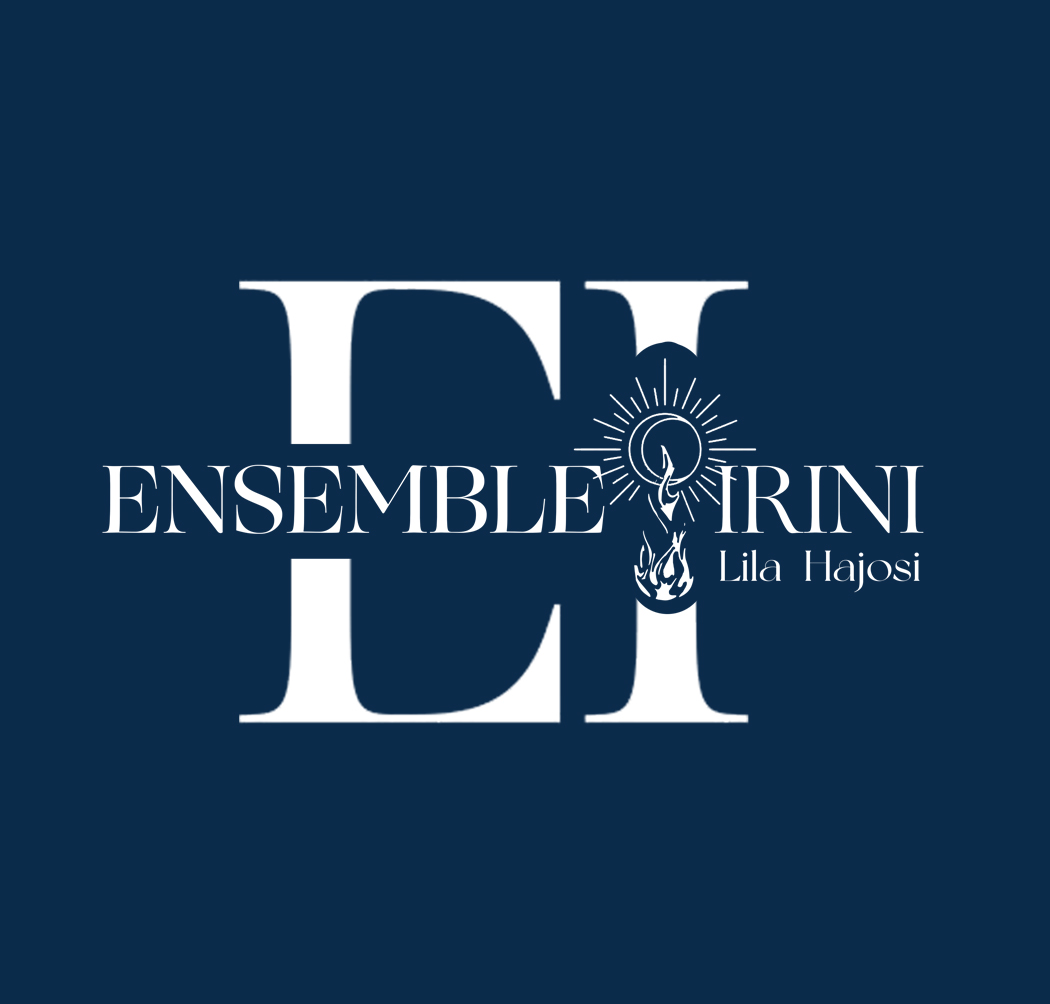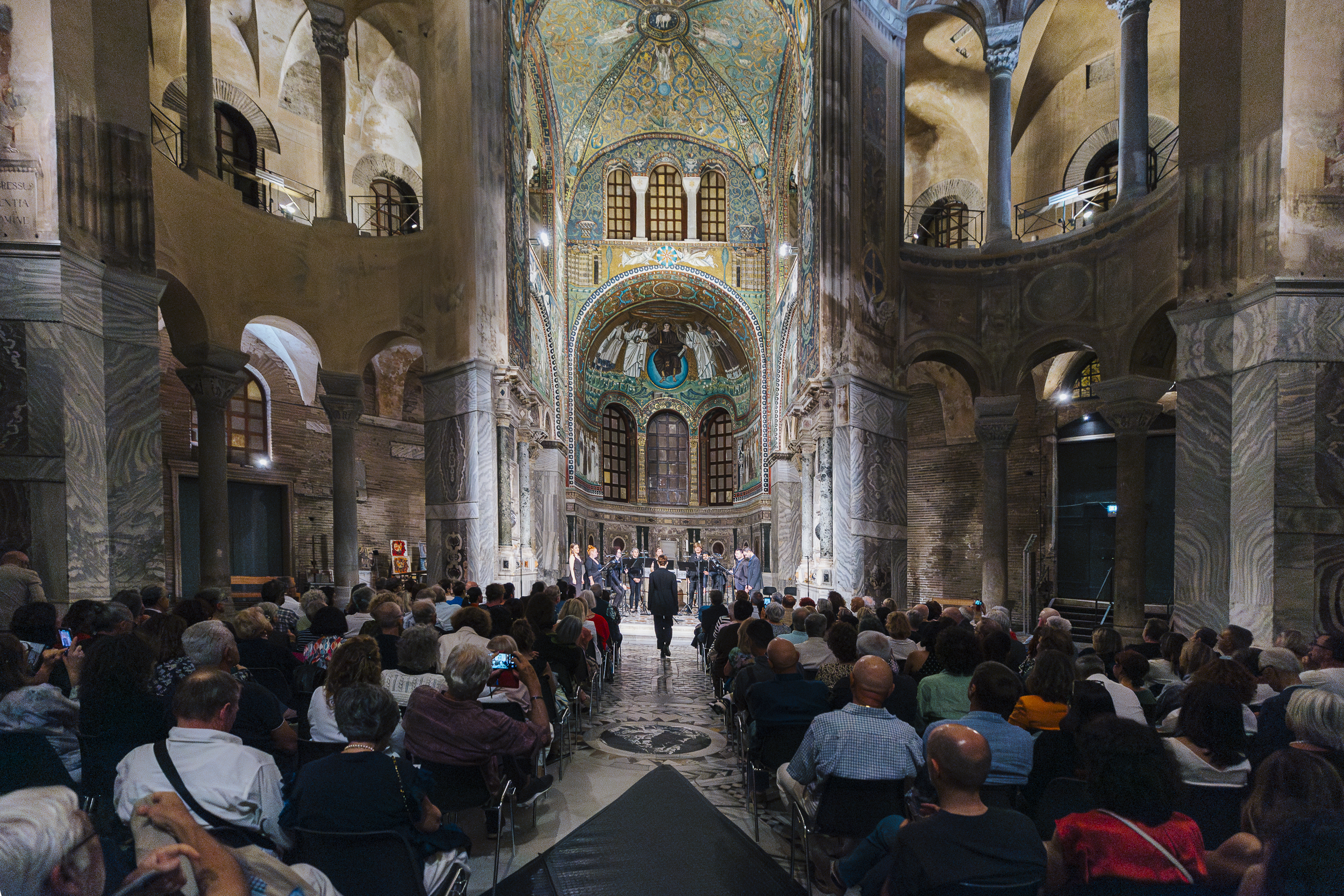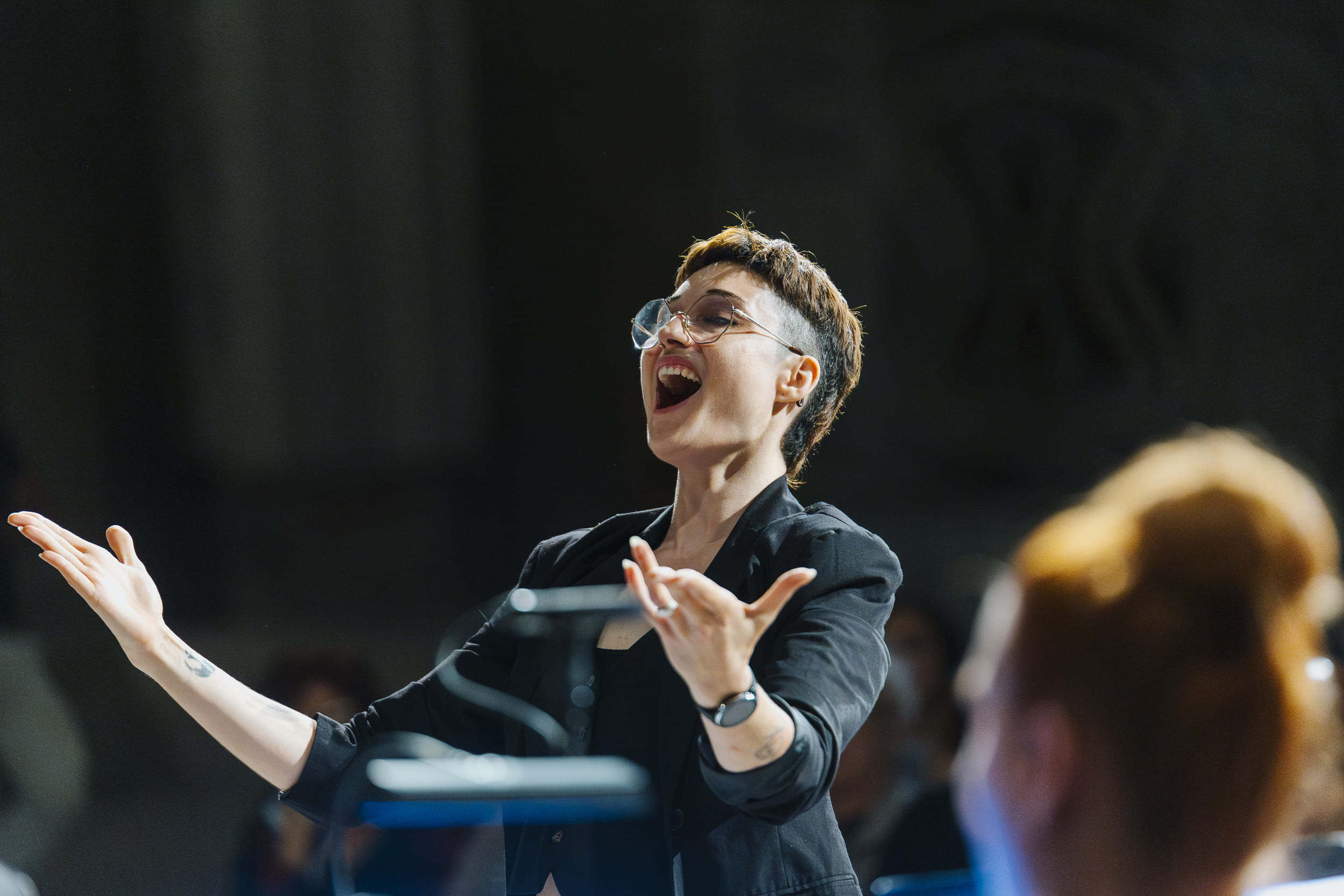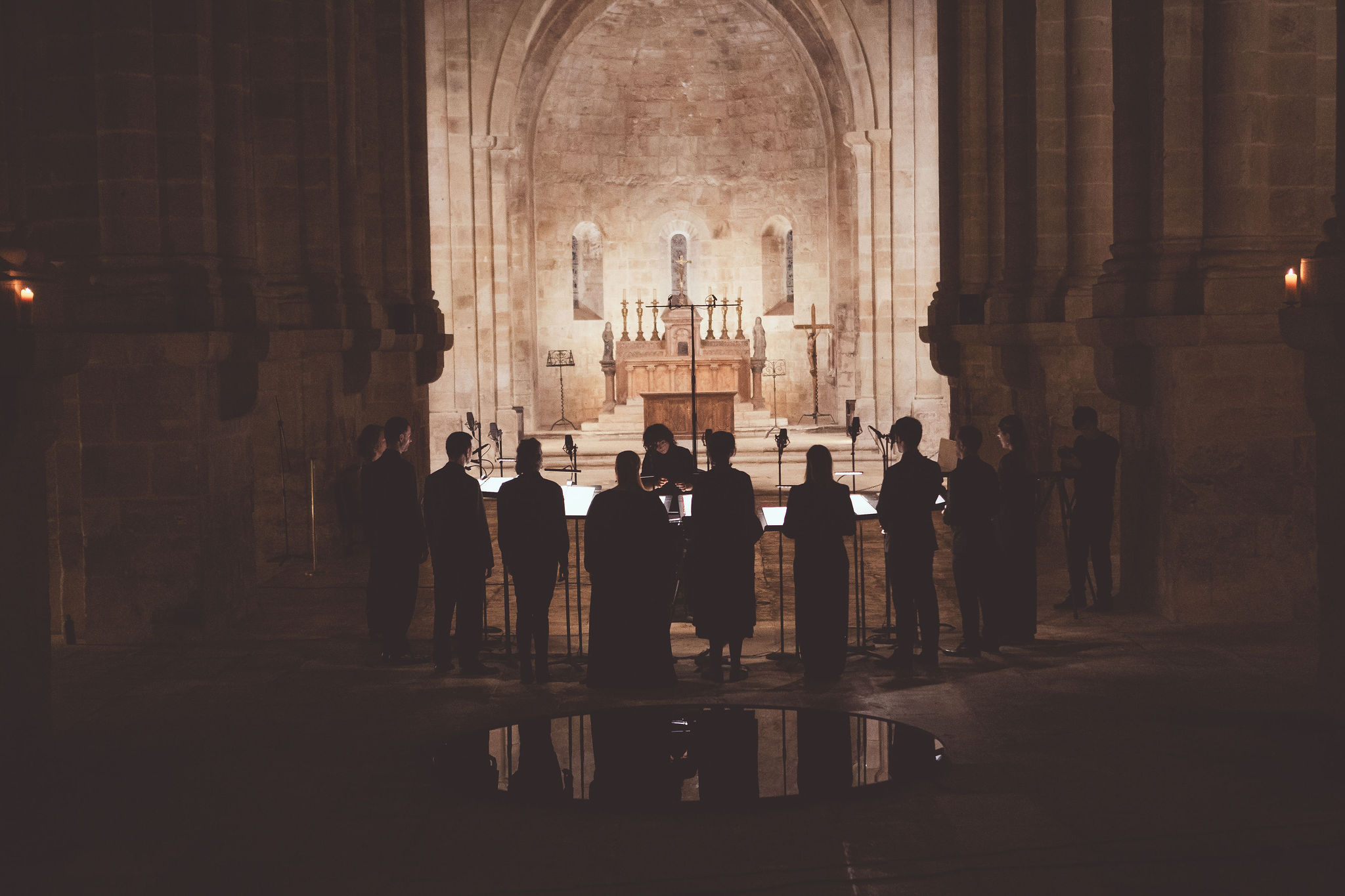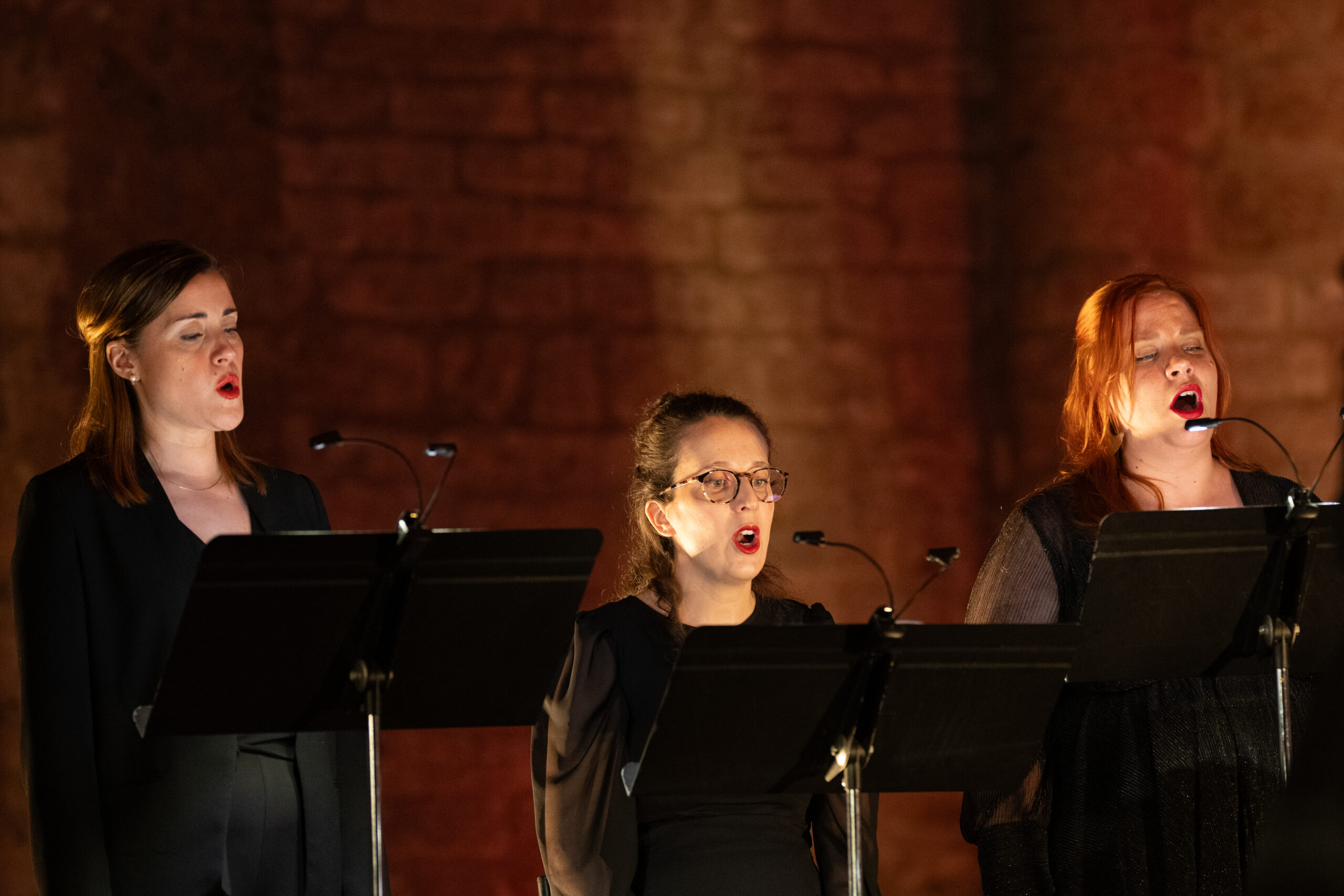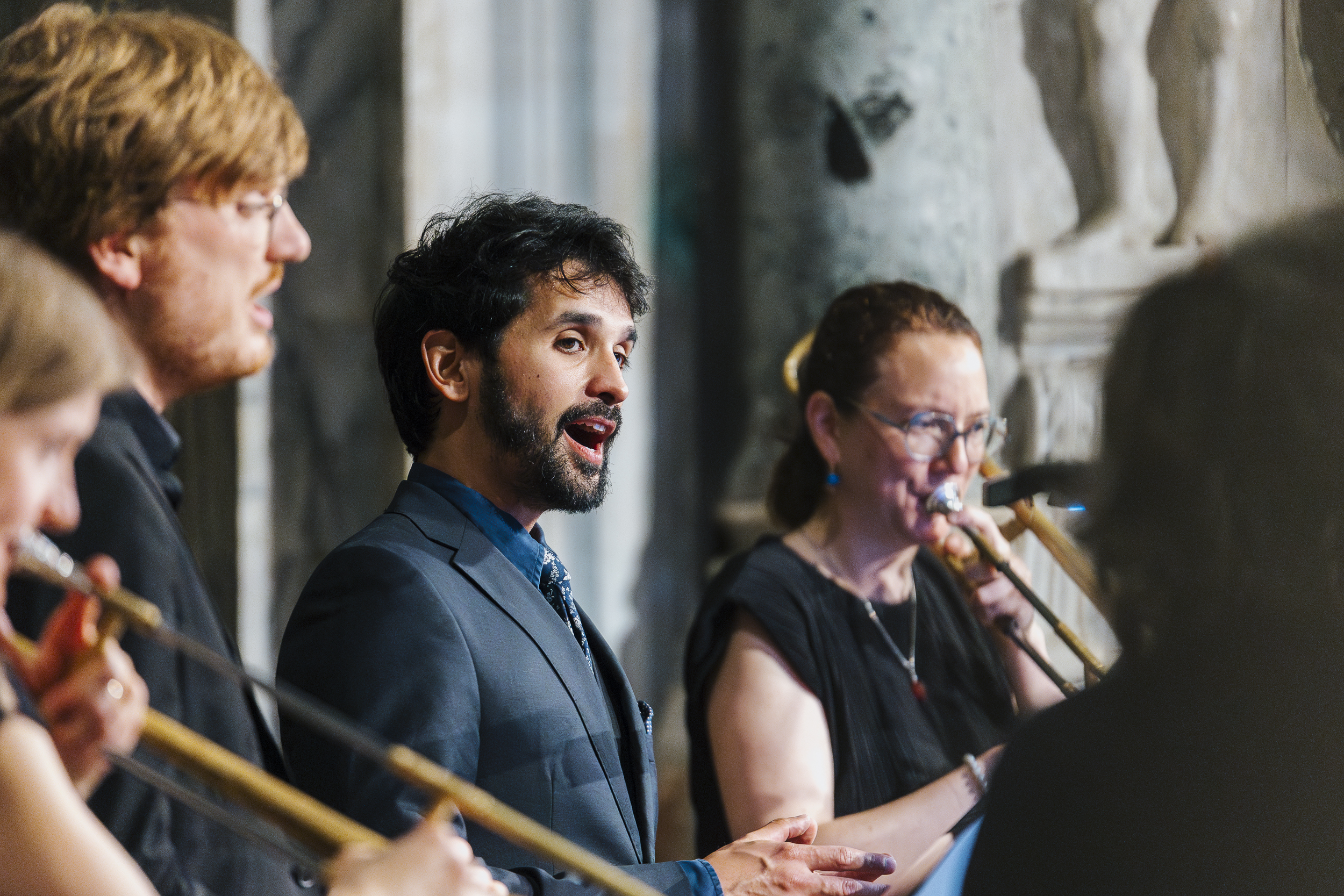"Through the themes of enjoyment, mourning and resurrection, the Irini Ensemble, creating unexpected links between East and West, puts into perspective sacred works by Heinrich Isaac, a true Bach of the Renaissance, and excerpts from Georgian Orthodox liturgy."
Sacred Spring - Living | Dying | Being (Re)born
Sacred Motets by Heinrich Isaac | Georgian Orthodox Liturgy
In 3 acts, the Irini Ensemble in octet a c appella tells a journey of initiation, between collapse and rebirth, on the Ariadne's thread of resilience.
Born in the crucible of the shocks and uncertainties of our time, between health and climatic crises, wars and identity withdrawal, Sacred Spring is an ode to life, to enjoyment and to hope.
This allegorical tale follows two fractured destinies.
The first is that of an exceptional composer: Isaac, a too often forgotten genius of the Franco-Flemish school, a competitor of Josquin, the last heir of Dufay and Binchois, who experienced the throes of war and the collapse of his world at the stake of Savonarola, and the long exile before the longed-for return to his Florence at the end of his life.
The second, in mirror image, is that of a country continually shaken by war and invasion, whose musical heritage, recently consecrated by UNESCO, constitutes by its very existence an act of resistance.
With "Sacred Spring", the Irini Ensemble in octet, recounts these paths of mourning and return to Life, through works for 3, 4 and 6 voices of a refinement and subtlety never equalled.
Lila Hajosi - Director
Eulalia Fantova - Clémence Faber: mezzos
Julie Azoulay - Lauriane le Prev : contraltos
Matthieu Chapuis - Olivier Merlin: tenors
Guglielmo Buonsanti - Sébastien Brohier - basses
https://youtu.be/l38-on5u5zchttps://youtu.be/zktQJJhwJAQ

Heinrich Isaac - The eternal return
If biographers have no certainty about the place of birth of the composer (Flanders, Netherlands, Germany?) and the year of his birth (around 1450), there is one unavoidable truth about Isaac, and that is that of the Florentine Giglio. His early years are obscure, we know that he made his first and brilliant weapons in Austria. His reputation was excellent and Europe was open to him. In 1485, he chose Florence where he worked as a cantor and composer for Lorenzo the Magnificent and the Medici. With the "Laurel" crowning the Incarnate Lily, Isaac established deep ties. It was Lorenzo de' Medici who established him in Florence, found him a wife, and entrusted him with the musical education of his children, including the future Pope Leo X. It is also him who goes so far as to offer Isaac's music, handwritten or in majesty in a rich chansonnier, as diplomatic gifts. As for the composer, he dressed in music the favorite poet of the "Prince": Angelo Poliziano, and it is on his verses that he will mourn his death, in 1492, in the extraordinary Quis dabit capiti meo aquarum? With Lorenzo the Magnificent, it is the Florence of Isaac, chosen and loved fatherland, which collapses. Faced with the general hostility inflamed in particular by Savonarola towards the Medici, Lorenzo's son, Peter the Unfortunate, did not resist and his banishment in 1494 put an end to the reign of the coat of arms with the five "palle". The child to whom Isaac had once taught music died at the age of 31 less than ten years later, trying to flee a battle. The other son, Giovanni, who became a cardinal, had to flee disguised as a Franciscan and disappeared. The composer underwent the same exile as the Medici and found himself with his Florentine wife in Austria in the service of Maximilian I, emperor of the Holy Roman Empire. In 1502, Isaac returned to Florence and tried to get a job in Ferrara, but a certain Josquin Desprez was preferred. In 1512, the Medici returned to Florence thanks to the Spanish army and Pope Julius II. Finally in 1515, as the Emperor, who was Isaac's employer, was approaching his death, he generously authorized the composer to return to Florence permanently while maintaining his pension. Isaac reconnected with the new Pope Leo X, whom he had studied as a child under the name of Giovanni, son of Lorenzo de' Medici. His former pupil became his protector and it was in Florence, his chosen homeland, which he finally found after 21 years of exile, that Isaac ended his life, in 1517.
Isaac's music is one of the apexes of the Renaissance. His writing is both traditional, notably through his attachment to the use of the Cantus firmus, and modern with the inclusion of canons and imitative writing. He remains unique in that he treats each voice as a melodist, never yielding to harmonic filler. There is no embellishment in Isaac's music, no artifice, each note, each voice is like a piece of clockwork. His music has this extraordinary aspect of a perfect mechanic, both machine and organ, both technical and of a unique sensitivity. This intricacy, which is impossible on paper, becomes absolutely obvious when the voices are singing. In this he is close, two centuries earlier, to Johann Sebastian Bach... who will take up one of his melodies in his St Matthew Passion!

Liturgical songs from Georgia - Surviving, abiding, reborn
At the time of Isaac's exile from Florence, Georgia, the last Christian bastion east of the Black Sea, had just been brutally separated into three kingdoms after bloody wars against the Turks and Persian Muslims. It will take almost three centuries to be reunified. However, this division of the kingdom did not stop the violence and the nobility, converted or not, was constantly fighting for power. In these incessant internal or external conflicts, the cultural heritage undergoes serious attacks. Thus in 1510 the monastery of Ghelati, considered as a second Mount Athos, sacred artistic center of Georgia of the XIVth century, was burned by the Turks. Georgian sacred music constitutes a unique heritage in the world of Orthodoxy, it is the only one that is truly thought of as polyphonic, with a unique writing in three interdependent voices. Where Byzantine music is built around a melodic line to which an ison responds, a drone giving the modal limits, according to the singer, polyphony is truly a writing with three voices, each one inseparable from the others. It is therefore not possible, contrary to the Byzantine or Russian Greek style, to isolate a fundamental chant around which the isonic voices are built. This particularity has been maintained through the resistance of Georgian singers, against the regular assimilation attempts of Byzantium or later, of Russia. No musicological treatise has survived to the present day and all technical knowledge concerning this unique music has been extracted from recordings of singers dating from the beginning of the 20th century. Thus, if many musical manuscripts remain, no indication concerning the musical execution exists. The work of reconstitution and analysis allowing today the survival of this heritage and the possibility of giving it to be heard is due to the research of Georgian and international ethnomusicologists. Georgian polyphony is a musical exception, the treasure of a culture that has been constantly dismantled, annexed, invaded, assimilated. However, it has never completely disappeared and today offers its beauty to the ears of the contemporary public, the fruit of a long path of resilience and resistance, and of international community work to safeguard it.
